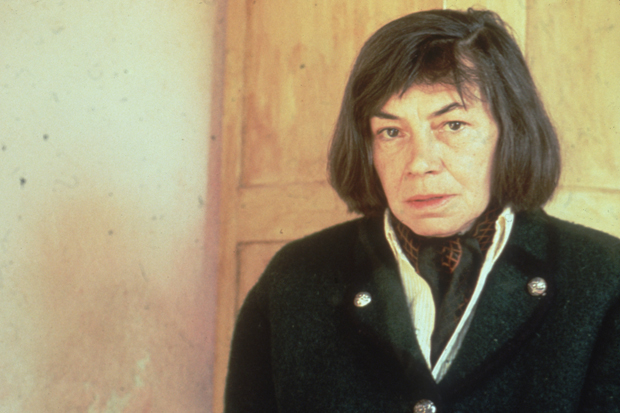The publisher has whipped up a tsunami of excitement around The Truth About the Harry Quebert Affair (translated from the French by Sam Taylor; MacLehose, £20, Spectator Bookshop, £16). More than two million copies have already been sold. Its author, Jöel Dicker, is apparently ‘Switzerland’s coolest export since Roger Federer’.The novel, which is billed as a literary thriller, has been garlanded with ecstatic reviews and prizes on the continent.
It’s the story of a young, successful but blocked writer who tries to re-energise his muse by visiting Harry Quebert, the Great American Novelist who put him on the road to fame. Harry lives in a beachside house in Maine. Unfortunately, the skeleton of a 15-year-old girl has been found beneath his hydrangeas, buried with the first draft of his best-known novel. Everyone is convinced Harry did it — except the narrator, who sets out to prove his mentor’s innocence.
The first thing you notice about this novel is that it’s very long — over 600 pages. The second is that its ‘literary’ qualities seem mainly to consist of a narrator who is himself trying to write a Great American Novel, which turns out to have the same title as this one, together with the theme of fictions within fictions; moreover, chapter numbers count down to one rather than away from it. The third is that it’s generally unsubtle and devoid of irony. The fourth is that it’s oddly readable: you find yourself suspending disbelief and turning the pages almost against your will. Finally, the plot may not convince you but its Byzantine complexity certainly inspires reluctant admiration. This may not be a Great American Novel, but it’s not a bad thriller.
The horrors of slavery lie at the heart of Theft of Life (Headline Review, £13.99, Spectator Bookshop, £12.59), Imogen Robertson’s latest historical crime novel. Set in London in 1785, it is one of her series about an odd couple — a lively widow, Harriet Westerman, and the eccentric Gabriel Crowther, a proto-forensic scientist. Harriet is staying at the London household of the youthful Lord Sussex, which bustles with characters who have appeared in earlier books in the series. Harriet’s dependants include a black footman, William, who is among the first to stumble on the corpse of a sugar planter, staked out as if for a flogging in St Paul’s churchyard. As the story unfolds, it takes Harriet and Gabriel among the freed slaves of London and the nascent struggle for the abolition of slavery.
Much of the pleasure here derives from the solid raft of historical detail on which the story rests, particularly in relation to how slavery was perceived in England at the time, and how black people were treated. Robertson cleverly interweaves and embellishes the facts in the service of her fiction.
As a best-selling novelist, Tony Parsons needs no introduction. With The Murder Bag (Century, £9.99, Spectator Bookshop, £9.49), however, he turns to crime fiction for the first time. The narrator, Max, is a homicide detective at London’s West End Central, a single parent who lives on triple espressos and adrenaline and is prone to mawkish moments and spurts of violence. A small daughter and smaller dog add pathos. The plot centres on the gory murders of a group of former public school boys. These link back to an episode of lethal sexual violence in the 1980s.
There is a sense of overfamiliarity about the book’s ingredients. The author demonstrates beyond doubt that he has done his research into police hardware and procedures and even the Black Museum. Some of the violence seems designed to appeal to a desired readership rather than integral to the storyline. Still, Parsons keeps the narrative going with a steady professional rhythm, which is a skill to be highly prized in any sort of fiction.
Finally, and best of all: Penguin Classics are in the process of publishing all 75 of Simenon’s Inspector Maigret novels in new translations, along with much of his other work. Originally published in 1931, Night at the Crossroads (translated by Linda Coverdale, Penguin, £6.99, Spectator Bookshop, £6.64) is the story of a bizarre murder beside a lonely road near Paris. After interrogating a suspect — a Danish aristocrat down on his luck — in Paris, Maigret drives down to investigate what really happened in what turns out to be a tiny community of secrets.
Despite the artificiality of the form, the novel is curiously — and perhaps timelessly — contemporary in tone. It has a whiff of darkness about it and more than a hint of violence, qualities that don’t date. The characterisation is spare but both subtle and effective, for Simenon knows how to make an ally of his reader’s imagination. By modern standards, the novel is very short — perfect for journeys. In any case, 150 pages by Simenon are almost always better value than 600 pages by any other crime writer or indeed any Great American Novelist.
Got something to add? Join the discussion and comment below.
Get 10 issues for just $10
Subscribe to The Spectator Australia today for the next 10 magazine issues, plus full online access, for just $10.
You might disagree with half of it, but you’ll enjoy reading all of it. Try your first month for free, then just $2 a week for the remainder of your first year.














Comments
Don't miss out
Join the conversation with other Spectator Australia readers. Subscribe to leave a comment.
SUBSCRIBEAlready a subscriber? Log in